Victory in Europe 1 -
Dutch Starvation & German Capitulation
by Glenn Warner
Maple Leaf Up presents the following photo essays:
Intro – Victory in Europe.
Story 1 – this page – Dutch Privation & German Capitulation in Holland.
Story 2 – Liberation of The Netherlands and the Aftermath of War.
Story 3 – VE Day on the Home Front in Canada.
*****
The Dutch starve as the war closes in Holland – events up to May 5th
While 2nd Corps of the 1st Canadian Army was crossing the Rhine River in late March 1945, 1st Corps was on a massive redeployment from the Italian front — through the Mediterranean and up through the south of France — to join the 1st Canadian Army advance into Germany and The Netherlands. Moving into northern Netherlands the Canadians effectively cut off the 117,000 German troops in western Holland, leaving them with no means of escape.
The Germans were defeated and the exhausted Canadian soldiers could see the end. Nobody wanted to be the last man killed in this war in the cold bleak months of early 1945. But the occupying Germans were still fighting, and the occupied Dutch were still suffering serious privation under them. The oppressors had flooded the farmlands of western Netherlands and blockaded food and supplies to civilians. The abject neglect of the Dutch by the occupying Germans caused the death of at least 18,000 civilians in the terrible famine known as the Hunger Winter.
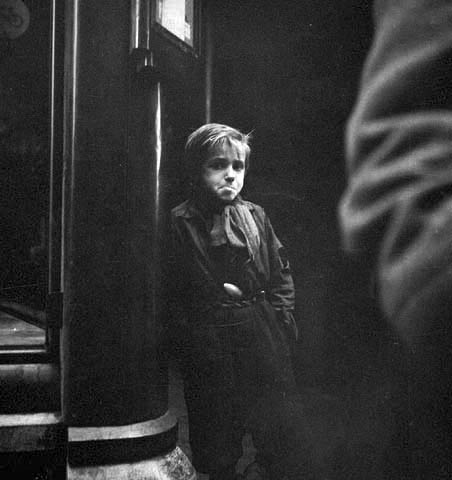
The face of Hunger. A Dutch boy, outside a black market restaurant, looks for a food handout. He's tucked a spoon into his belt in the event. Amsterdam, Netherlands. Dutch photographer Kryn Taconis would have to record his photos secretly. (Photographer: Kryn Taconis; Library and Archives Canada a169941)
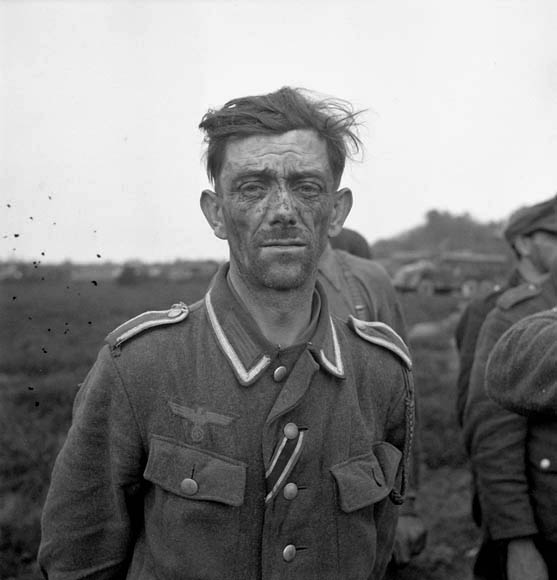
The face of Defeat. A German prisoner-of-war captured near Otterloo, Netherlands after a German counter-attack attempted to cut off the 5th Canadian Division spearhead, April 1945. He is an Unteroffizier (Sr Corporal) and the ribbon he is wearing is from the Kriegverdienstkreuz or War Merit Cross. (Photographer: Jack H. Smith; Library and Archives Canada a166369)
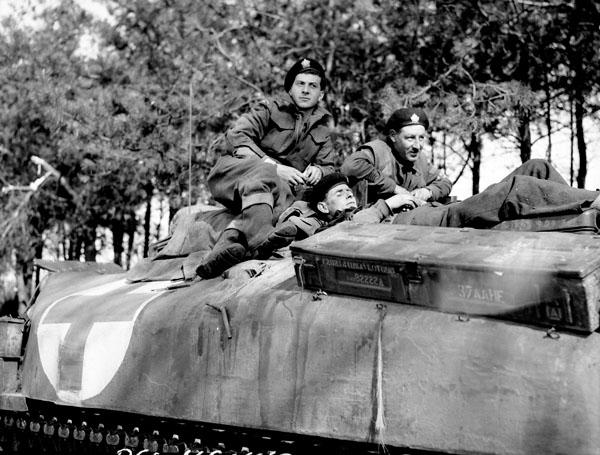
The face of Exhaustion. Canadian Crew of a Kangaroo used by The Fort Garry Horse tank regiment as an armoured ambulance, Holten, Netherlands, April 1945. (L-R): Troopers Joe Fine and Bob Wright, Corporal Frank Aikens. (Photographer: Dan Guravich; Library and Archives Canada a133165)

Food negotiations begin. German and Canadian negotiators arrive at a schoolhouse, where they secretly discuss supplying food to the starving Dutch people still in German-held areas, 30 April 1945. Achterveld, Netherlands. (Photographer: Ernest DeGuire. Library and Archives Canada a154126)
*****
3 May 1945 - Food supplies start to move by truck
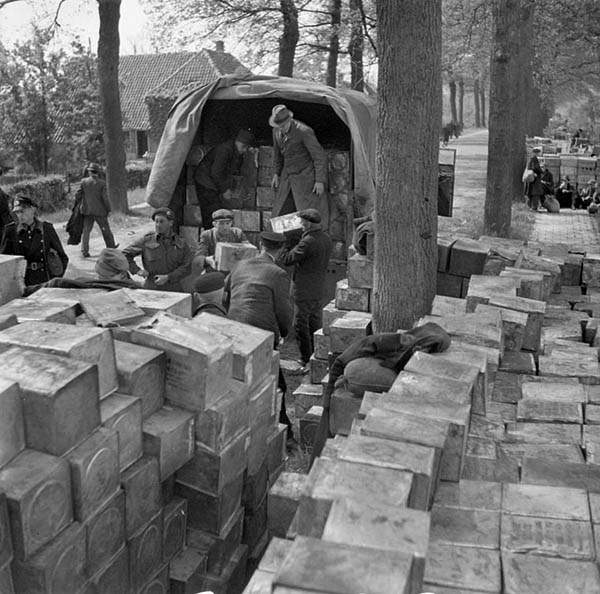
Dutch civilians load a Canadian truck with food, following agreement amongst Germans, Dutch and Canadians about the ground distribution of food to the Dutch population. 3 May 1945, near Wageningen, Netherlands. (Air drops of food by the UK & US had started on April 29th and lasted till May 8th.) (Photographer: Alex Stirton; Library and Archives Canada a134417)

German soldiers guard a food dump established in forward area, talking to one of the Dutch drivers who is to distribute the food in a Canadian truck. 3 May 1945, near Wageningen, Netherlands. (Photographer: Alex Stirton; Library and Archives Canada a134416)
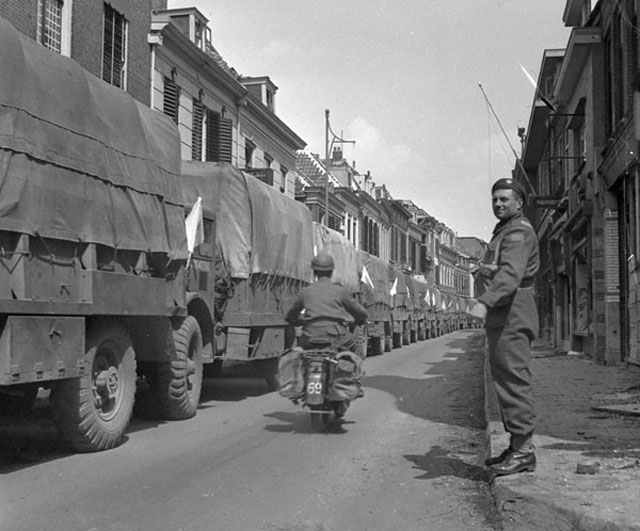
A convoy of trucks of Allied food supplies moving into German-occupied territory along the road from Wageningen to Rhenan, Netherlands, 3 May 1945. (Photographer: Alex Stirton; Library and Archives Canada a134419)
*****
5 May 1945 - Canadians negotiate German surrender
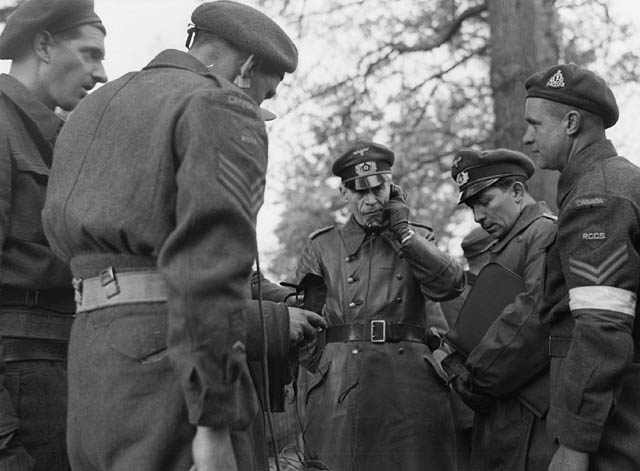
German Army signals officer Major K. Henninger speaking on a telephone linkup between Canadian and German forces as communications are established, on the Wageningen-Rhenen road, Netherlands, 5 May 1945. The Cdn corporal on the right is John Osborn (B88372) from 1st Cdn Line Section, 1st Cdn Corps RCCS (Royal Canadian Corps of Signals.) Osborn made the joint in the cables.
Osborn is wearing the white-over-dark-blue armband distinguishing Signals, worn by the Royal Canadian Corps of Signals, the British Royal Signals, and the Australian, New Zealand, South African, and Indian Army Corps of Signals. (Photographer: Ernest DeGuire; Library and Archives Canada a134408)
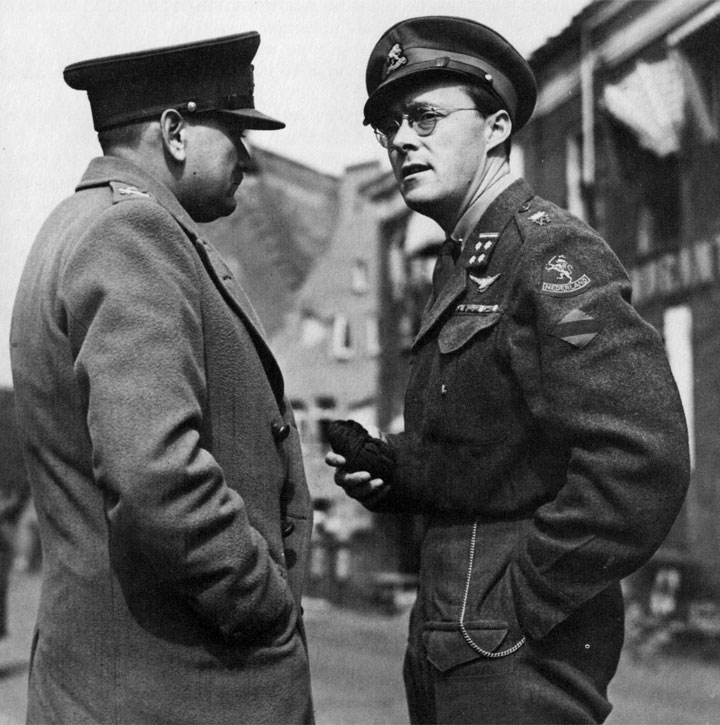
Canadian Lieutenant-General Charles Foulkes (left), commander of the 1st Canadian Corps, talks with Prince Bernhard of The Netherlands before dictating the surrender terms to the Germans on May 5 at Hotel de Wereld, Wageningen, Netherlands, 5 May 1945. (Photographer: Alex Stirton; Library and Archives Canada a116820)
Prince Bernhard was a German by birth and his brother was an officer in the German Army. But Bernhard married Dutch princess Juliana in 1937 and swore allegiance to the Dutch House of Orange, cutting off any contact with members of his family who were Nazis. Bernhard spent most of the war in England, while his wife Juliana and three daughters lived in Ottawa, Canada till the war's end. (The third daughter, Margriet, was actually born in Ottawa Civic Hospital with Prince Bernhard in attendance.)

German Lieutenant-General Paul Reichelt (center) and Canadian Lieutenant-General Charles Foulkes (right) during preliminary discussions around 11am regarding the unconditional surrender of German forces in the Netherlands. At Hotel de Wereld, Wageningen, Netherlands, 5 May 1945. War correspondents line the tables behind. Photographer Alex Stirton of the Canadian Film & Photo Unit attends to record the drama unfolding and give us these shots. (Photographer: Alex Stirton; Library and Archives Canada a137730)
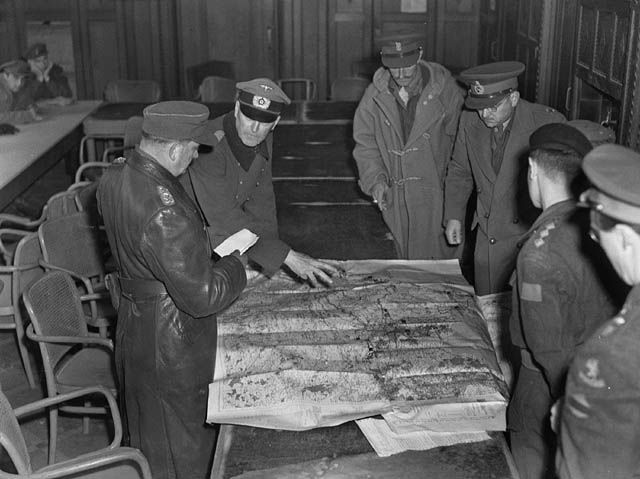
Discussions continue at Hotel de Wereld, Wageningen, Netherlands, about unconditional German surrender. German General Reichelt is 2nd from left. Canadian 1st Corps Staff General, Brigadier-General George Kitching, stands at head of table next to 1st Corps commander Lieutenant-General Foulkes. The Canadian Captain with the beret, second from right is probably interpreter George Molnar. His Royal Highness Prince Bernhard of the Netherlands is in right foreground.
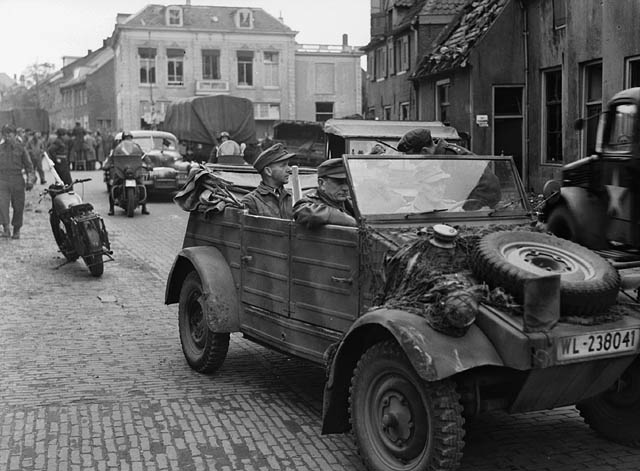
After preliminary discussions with German General Reichelt, Canadian commander Foulkes sends him back to summon his superior, Johannes Blaskowitz, the Officer commanding all German forces in Fortress Holland. In this photo, outside Hotel de Wereld in Wageningen, Reichelt departs the meeting to carry the surrender message back to Blaskowitz and arrange to bring him back at 4pm. (Photographer: Alex Stirton; Library and Archives Canada a134420)

Back at the table in Hotel de Wereld at 4pm with German head honcho General Blaskowitz. Lieutenant-General Charles Foulkes (left centre), Commanding Officer of 1st Canadian Corps, now sits on the opposite side of the same table where the earlier discussions took place. Foulkes is accepting the surrender of all German forces in The Netherlands from General Johannes Blaskowitz (second from right) on 5th May 1945 in Hotel de Wereld, Wageningen, Netherlands. Reichelt sits to Blaskowitz's right. Kitching sits to Foulkes's left. Prince Bernhard of the Netherlands sits in the foreground on the left. In The Netherlands, May 5th would henceforth become Liberation Day (Dutch: Bevrijdingsdag), celebrating the end of Nazi occupation in World War II. Though German by birth, Bernhard represented the Dutch and refused to speak German during the negotiations. (Photographer: Alex Stirton; Library and Archives Canada a138588)
*****
5 May 1945 - News and rumours circulate to Canadian troops
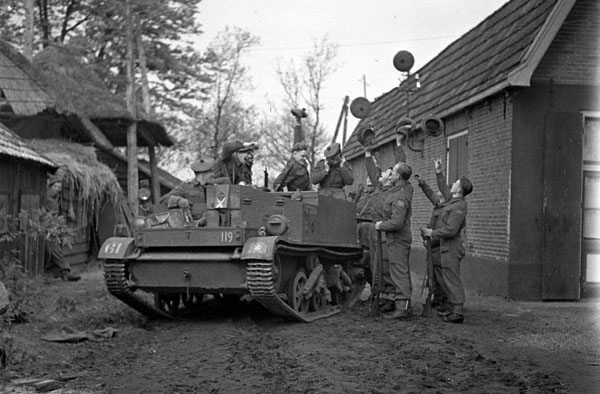
As photographer Alex Stirton records the official surrender proceedings, CFPU photographer Mickey Dean circulates among the troops and takes some contrived poses of Canadian soldiers. Here, among 1st Corps troops, wireless operator Mac Keays relays the news of the end of hostilities to Universal Carrier driver Private Hugh McKerlain and infantrymen of "D" Company, The Seaforth Highlanders of Canada, De Glindhorst, Netherlands, 5 May 1945. As part of 1st Division, the Seaforths had been involved in continuous hostilities much longer than the regiments of other divisions, starting with the invasion of Sicily in July 1943. (Photographer: Michael M. Dean; Library and Archives Canada a134450)
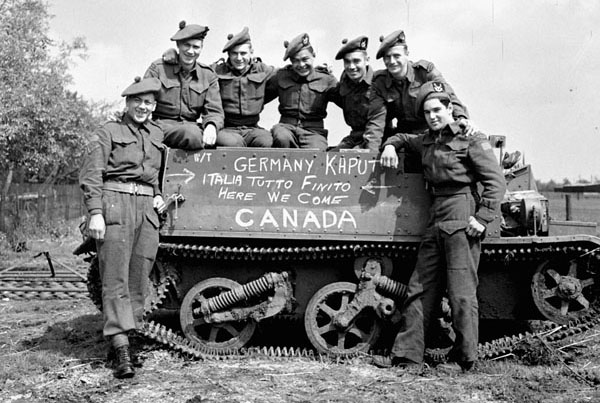
Infantrymen of "D" Company, The Seaforth Highlanders of Canada, with their Universal Carrier, which is inscribed "Germany Kaput - Italia Tutto Finito - Here We Come Canada", De Glindhorst, Netherlands, 5 May 1945. (L-R): Private Wilf Monbourquette, Sergeant Ross MacKay, Privates Hugh McErlain, Lawrence Spence, Harry Campbell, Dusty Millar and Aubrey Bolitho. (Photographer: Michael M. Dean; Library and Archives Canada a134420)
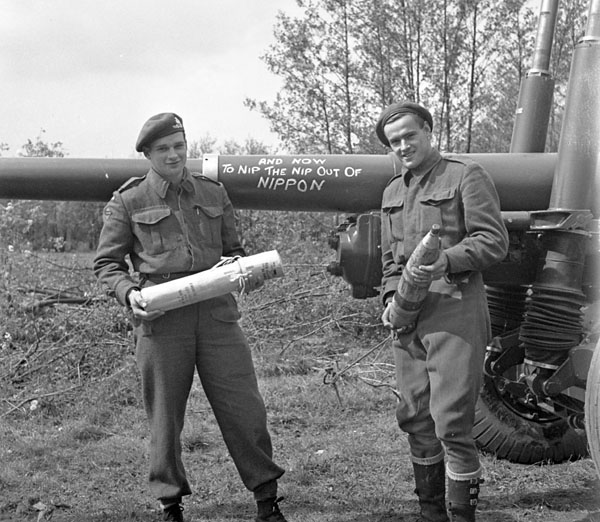
Gunner Gerry Smith and Lance-Bombardier Bert Coughtry of the 5th Medium Regiment, Royal Canadian Artillery, pose with a message on the barrel of their BL 5.5 inch Medium Gun. Otterloo, Netherlands, 5 May 1945. (Photographer: Michael M. Dean; Library and Archives Canada a134453)
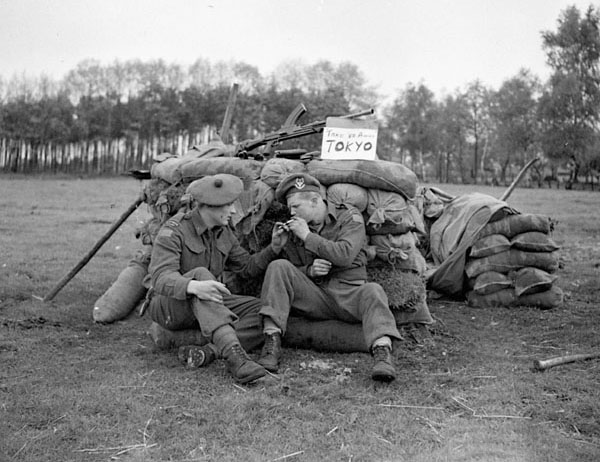
More posing of soldiers of 1st Corps receiving the news. Here, photographer Mickey Dean captures infantrymen of "D" Company, The Seaforth Highlanders of Canada, taking it easy outside their Bren gun pit. The sign on the Bren gun reads "Take It Away Tokyo", a sober reminder that while the hostilities were over in Europe, there was still a war in the Pacific. De Glindhorst, Netherlands, 5 May 1945. (Photographer: Michael M. Dean; Library and Archives Canada a137732)
*****
Meanwhile, back in northern Germany...
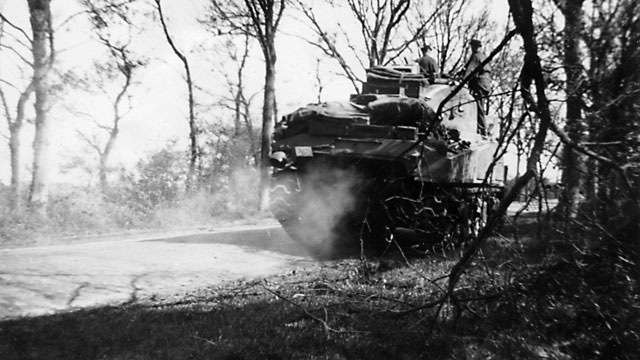
While 1st Corps kept the Germans hemmed up in Western Holland, 2nd Corps pushed through northern Netherlands into northern Germany. Here, a Sherman crew from Headquarters Squadron of the Sherbrooke Fusilier Regiment listens on the wireless set to Churchill delivering the news that the war in Europe is over. Taken near Leer, Germany. (Maple Leaf Up collection)
The Photo Essay on Victory in Europe continues next page. ![]()
*****
Hey, we're learning too. If you have any observations, comments, insights, or see any errata, typos, or anything nutty when viewing these photos, please contact us. (Refer to photo reference numbers if possible.)






